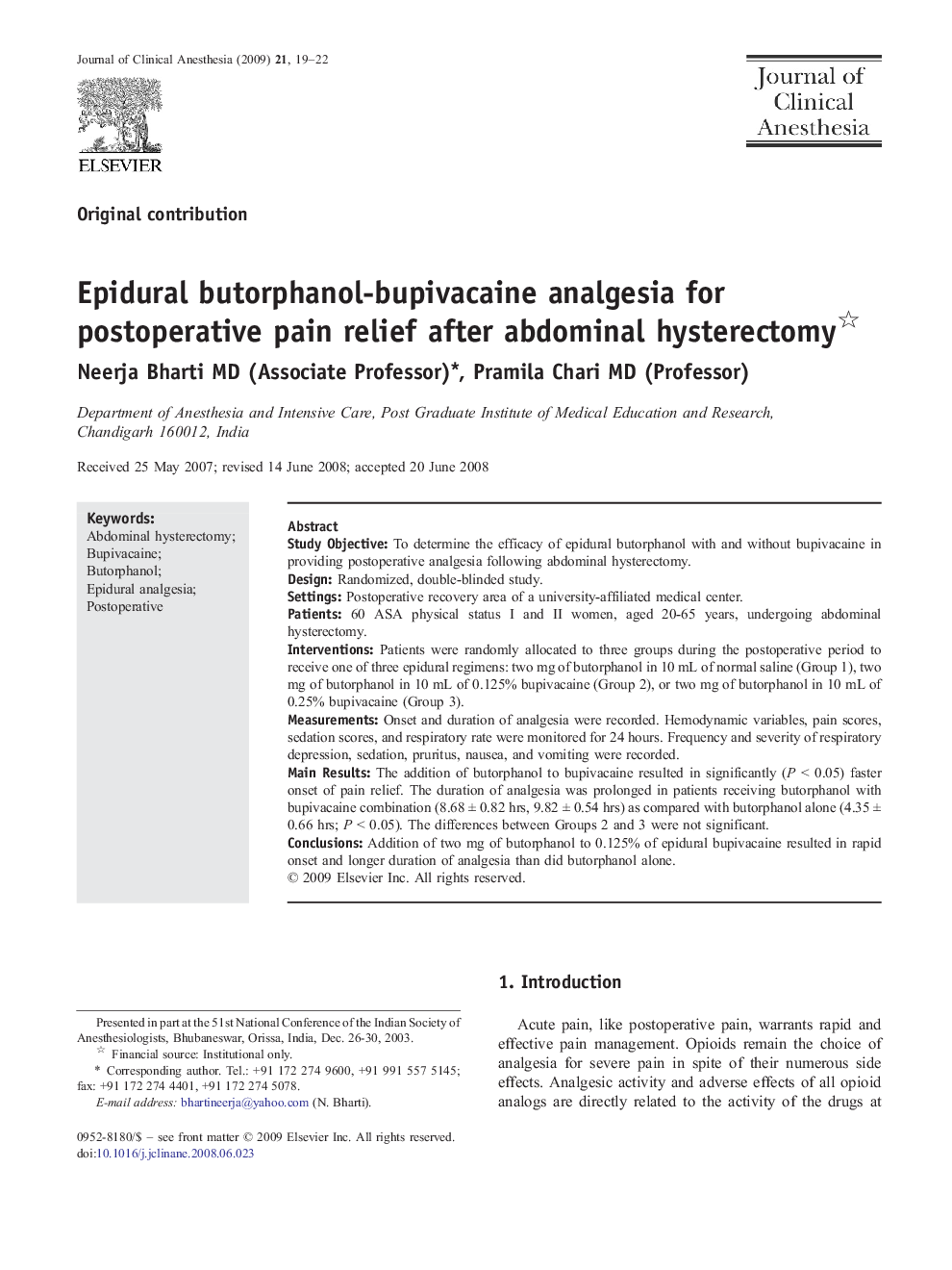| Article ID | Journal | Published Year | Pages | File Type |
|---|---|---|---|---|
| 2763440 | Journal of Clinical Anesthesia | 2009 | 4 Pages |
Study ObjectiveTo determine the efficacy of epidural butorphanol with and without bupivacaine in providing postoperative analgesia following abdominal hysterectomy.DesignRandomized, double-blinded study.SettingsPostoperative recovery area of a university-affiliated medical center.Patients60 ASA physical status I and II women, aged 20-65 years, undergoing abdominal hysterectomy.InterventionsPatients were randomly allocated to three groups during the postoperative period to receive one of three epidural regimens: two mg of butorphanol in 10 mL of normal saline (Group 1), two mg of butorphanol in 10 mL of 0.125% bupivacaine (Group 2), or two mg of butorphanol in 10 mL of 0.25% bupivacaine (Group 3).MeasurementsOnset and duration of analgesia were recorded. Hemodynamic variables, pain scores, sedation scores, and respiratory rate were monitored for 24 hours. Frequency and severity of respiratory depression, sedation, pruritus, nausea, and vomiting were recorded.Main ResultsThe addition of butorphanol to bupivacaine resulted in significantly (P < 0.05) faster onset of pain relief. The duration of analgesia was prolonged in patients receiving butorphanol with bupivacaine combination (8.68 ± 0.82 hrs, 9.82 ± 0.54 hrs) as compared with butorphanol alone (4.35 ± 0.66 hrs; P < 0.05). The differences between Groups 2 and 3 were not significant.ConclusionsAddition of two mg of butorphanol to 0.125% of epidural bupivacaine resulted in rapid onset and longer duration of analgesia than did butorphanol alone.
